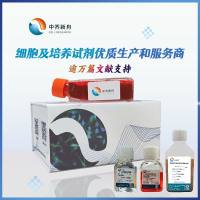MRD Detection in Acute Lymphoblastic Leukemia Patients Using Ig/TCR Gene Rearrangements as Targets for Real-Time Quantitative PCR
互联网
566
Minimal residual disease (MRD) diagnostics has proven to be clinically relevant for evaluation of treatment effectiveness in patients with acute lymphoblastic leukemia (ALL). In most ALL treatment protocols, MRD diagnostics is performed by real-time quantitative PCR (RQ-PCR) analysis of the junctional regions of rearranged immunoglobulin (Ig) and T-cell receptor (TCR) genes.
MRD diagnostics via Ig/TCR genes is broadly applicable (>95% of ALL patients) and can reach a good sensitivity (≤10 −4 ). However, the technique is complex and requires extensive knowledge and experience, because the junctional regions of each leukemia have to be identified before the patient-specific RQ-PCR assays can be designed for MRD monitoring. This chapter provides all relevant background information and technical aspects for the complete laboratory process from detection of the clonal Ig/TCR gene rearrangements in ALL cells at diagnosis to the actual MRD measurements in clinical follow-up samples. This information aims at facilitating the PCR-based MRD diagnostics in ALL patients. However, it should be noted that MRD diagnostics for clinical treatment protocols has to be accompanied by regular international quality control rounds to ensure the reproducibility and reliability of the MRD results.









